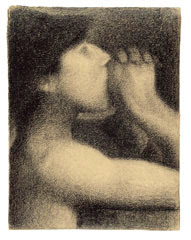Poems on Reading Poems
A poem written on a work of art is called ekphrastic. What about a poem written on reading another poem or poet? I don't mean poems that allude to other poems or that gossip about other poets, like Thom Gunn's "Keats at Highgate," much as I like that sonnet; I mean poems whose subject is the experience of reading itself. A poem like Keats' "On First Looking into Chapman's Homer," for instance. And why do poets write poems about their experience reading other poems? Some of it has probably to do with the common instinctive response to beauty: we want to reproduce it, whether by telling someone about it, by drawing what comes to mind, or by blogging about it. Some of it has to do with trying to make sense of, or impose some form on, a powerful but inchoate experience; it relieves psychic pressure. Some of it has to do with claiming literary ancestors or mentors or rivals, or with distracting readers' attention from the real ancestors, mentors and...




